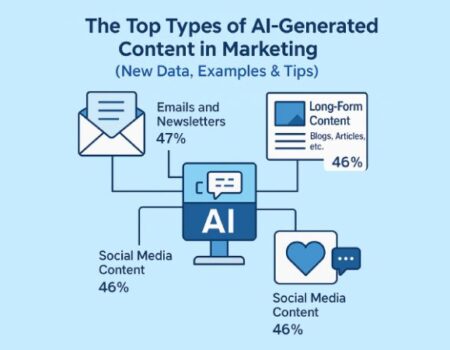AI Overviews: Understanding Them and Mastering Optimization
Google’s AI Overviews represent a search feature that leverages generative AI to deliver quick answers directly within search results, a functionality many of us have encountered either knowingly or as part of an updated experience.
We’ve dedicated countless hours studying AI Overviews since their official announcement on May 14, 2024. Through this analysis, we’ve uncovered what their introduction signifies for the SEO landscape up to this point.
What Are AI Overviews?
AI Overviews are AI-generated summaries tailored to your specific search query. They appear above traditional organic search results and may be positioned before or after paid results (ads), depending on the nature of the query.
The layout of AI Overviews varies significantly. These summaries can take the form of mini-articles, tables, or lists, adapting dynamically to the user’s needs.
For instance, when searching “what is SEO,” you’ll encounter a concise and informative summary.
This summary includes link cards—clickable links directing users to websites used in generating the AI-generated response or offering insights into related topics and queries.
However, AI Overviews aren’t confined to addressing simple questions. They’re also capable of tackling complex, multi-layered queries in a single step.
Take, for example, the query “best cities for tech startups with low cost of living in the U.S.” The AI Overview evaluates several factors simultaneously:
- Cities suitable for tech startups
- Low cost of living
- Located in the United States
- Rankings or comparisons to determine the “best” options
Rather than requiring users to search each of these elements separately, AI Overviews consolidate all relevant information into one cohesive answer. This ability to understand and respond to highly detailed queries eliminates the need for manual breakdowns.
To witness this firsthand, try a travel-related query like “5 day travel itinerary in Andalucia Spain.”
This functionality is a significant time-saver, as it provides everything users need in one place.
Yet, for businesses dependent on organic (unpaid) search traffic, this advancement raises concerns.
If users can access all necessary information directly from Google, they may not click through to individual websites. This behavior could result in reduced website visits and fewer potential customers.
Thus, as a website owner, understanding how AI Overviews might influence your traffic—and learning how to optimize for them—is essential.
The Current State of AI Overviews
(While rewriting this use knowledge of 2025 overview of Google)
It’s important to reiterate that AI Overviews are still undergoing development.
They initially emerged as part of Google’s Search Labs experiment known as the Search Generative Experience (SGE). Following their May 2024 rollout, Google appears to have scaled back the prevalence of AI Overviews.
Currently, according to Semrush Sensor data, AI Overviews appear in only 1.28% of U.S. search queries.
(Create a section here of the latest update)
Latest Updates on AI Overviews in 2025
In 2025, Google has introduced refinements to its AI Overviews, enhancing both accuracy and relevance. Recent updates focus on improving the contextual understanding of queries while minimizing instances of incomplete or misleading summaries.
Key developments include:
- Expanded integration with Google’s Knowledge Graph to ensure more precise data sourcing.
- Enhanced personalization features allowing AI Overviews to adapt based on user preferences and past interactions.
- Increased emphasis on transparency, with clearer indications of which websites contribute to the generated summaries.
These advancements aim to strike a balance between providing value to users and maintaining fairness for content creators and businesses reliant on search visibility.
How AI Overviews Work
AI Overviews function by leveraging advanced machine learning models trained on vast datasets. When a query is entered, the system identifies relevant web pages, extracts key information, and synthesizes it into a coherent summary.
This process involves multiple steps:
- Analyzing the intent behind the query.
- Selecting authoritative sources for information extraction.
- Generating concise yet comprehensive responses.
Impact on SEO
The rise of AI Overviews has sparked discussions about their impact on SEO strategies. While these summaries streamline user experiences, they also pose challenges for businesses aiming to drive traffic to their websites.
Some notable effects include:
- Reduced click-through rates for queries where AI Overviews dominate the results page.
- Greater importance placed on securing featured snippets and high-authority backlinks.
- The need for content creators to focus on producing unique, in-depth material that adds value beyond what AI Overviews can provide.
Optimizing for AI Overviews
To thrive in an era dominated by AI Overviews, businesses must adopt proactive optimization strategies. Here are some actionable tips:
- Structure content clearly using headings, bullet points, and concise paragraphs.
- Incorporate relevant keywords naturally throughout the text.
- Ensure factual accuracy and cite credible sources to increase the likelihood of being included in AI-generated summaries.
By aligning content creation efforts with the evolving demands of Google’s AI features, businesses can maintain visibility and engagement even amidst changing search dynamics.
AI Overviews: Why They Matter and How to Adapt
AI is transforming the future of search, making AI Overviews a critical focus for SEO professionals. Although their introduction was met with mixed reactions and challenges, all indications suggest they are here to stay.
As Jim Yu, Founder and Executive Chairman of BrightEdge, explains:
“AI in search represents an inevitable shift. Things will only become exponentially better and more useful as testing progresses. While it’s currently getting some aspects wrong, it’s actively refining key elements—search quality, traffic flow within its ecosystem, and monetization through ads.”
This trend is evident across other search engines as well, with Microsoft’s Bing Copilot already incorporating similar AI-driven functionalities.
One thing is certain: this is the trajectory search is following.
To remain competitive, preparation for these changes is essential. But what impact will they have on your site’s organic performance?
How Do AI Overviews Influence SEO?
However, alongside challenges, AI Overviews also present new opportunities.
For those who can adjust their strategies effectively, there’s potential to enhance visibility and attract more qualified traffic.
As Tim Cameron-Kitchen of Exposure Ninja states:
“It’s going to be fascinating to observe how marketers adapt to this black-box approach to search. I’m genuinely excited because I know many businesses won’t adapt. And that creates openings for those who do to become far more aggressive.”
Google, for its part, maintains a positive outlook.
The company claims that early data shows AI Overviews are driving more clicks to sites featured in summaries:
“With AI Overviews, users are visiting a wider variety of websites to address more complex queries. Additionally, links included in AI Overviews receive more clicks than if the page had appeared as a traditional web listing for the same query.”
Despite this, skepticism remains among some SEO professionals.
Concerns persist regarding the accuracy of AI-generated content and the possibility of AI replicating content without proper attribution.
There’s also apprehension about the potential decline in website traffic.
As Garrett Sussman, Demand Generation Manager at iPullRank, notes:
“There’s always been an unspoken agreement between Google and websites—that you can index our content as long as you direct traffic to us. AI Overviews feel like a breach of that understanding.”
The reality is:
AI Overviews are still in their infancy. Google is actively refining the feature, leading to volatility. As we’ve seen with all things AI, changes can occur rapidly.
Fortunately, the SEO industry has proven highly adaptable. We’ve faced significant shifts before and consistently found ways to evolve and succeed.
At Backlinko, we’re choosing to focus on the positive aspects of this development.
Here’s the opportunity:
If approached strategically, AI Overviews could potentially drive more qualified traffic to your site. This traffic is likely to be more aligned with your offerings and more inclined to convert.
How Google AI Overviews Operate
AI Overviews are powered by a customized version of Gemini, Google’s large language model.
They collaborate with other Google systems, such as the Knowledge Graph and search ranking algorithms, to deliver AI-generated responses.
You’ll encounter AI Overviews in your search results when Google determines that an AI-generated answer will be beneficial. Currently, they appear for a relatively small percentage of searches, but this is expected to grow over time.
We’ve observed AI Overviews for various types of queries, including:
- Informational: Explanatory searches, such as “what types of cells undergo mitosis.”
- Question-based: Queries beginning with what, why, how, when, and where, like “where to look for northern lights in Kansas.”
- Planning: Searches focused on organizing information, such as “1-week meal plan for the Fast 800 diet.”
- Ecommerce: Product-related searches, like “blackout curtains for bedroom.”
- YMYL (Your Money, Your Life): Sensitive topics requiring expertise, such as “how to invest in stocks” or “ways to lower blood pressure.”
What AI Overviews Look Like
The format of AI Overviews adapts to suit the specific search query. Here’s what you might encounter:
| Format | Description |
|---|---|
| Mini informational articles | Concise summaries, such as “Google SERP – What is technical SEO – AI Overview” |
| Tables | Organized data, like “Google SERP – Home remedies for hair loss – AI Overview” |
| Comparison tables | Side-by-side comparisons, such as “Google SERP – Best mini air conditioners” |
| Simplified breakdowns | Step-by-step explanations, like “Google SERP – How does mitochondria work” |
| Interactive | Actionable insights, such as “Google SERP – 200-calorie breakfast for one” |
| Shopping-focused | Product recommendations tailored to user intent |
These formats ensure that AI Overviews cater to diverse user needs while maintaining relevance and clarity.
Optimizing for AI Overviews:How To Enhance Your Google Search Presence
Analyze AI Overview Performance
Before diving into specific tactics, understanding your current performance in AI Overviews is crucial. Tools like Semrush have adapted to provide insights into these rankings. In September 2024, Semrush expanded its AI Overview tracking in the Organic Research tool, enabling large-scale analyses.
By filtering for “SERP Features” and selecting “AI Overview,” you can identify which keywords and pages trigger these summaries. For example, Backlinko found 2.1K keywords featured in AI
Overviews, including “SEO strategies,” where it secured both an AI Overview link and a featured snippet. Use this data to uncover patterns in content types, topics, and structures that influence inclusion.
Prioritize User Experience (UX)
Delivering exceptional user experience (UX) is essential for ranking well in AI Overviews. As Bartosz Góralewicz emphasizes, focus on what users want rather than just technical metrics like E-E-A-T.
Optimize for UX: Cater to Search Intent: Use tools like Semrush’s Keyword Overview to determine whether a query is informational, navigational, commercial, or transactional. Align your content accordingly—create guides for informational queries or product roundups for commercial ones.
Organize Content for Easy Reading: Break text into digestible sections using bullet points, headings, and short paragraphs. Incorporate white space to improve readability. Incorporate
Multimedia: Add videos, images, and workflows to engage users and clarify complex information.
Optimize Technical SEO: Enhance page speed, navigation, internal linking, and mobile optimization to encourage longer site visits, signaling relevance to Google.
Help Google Understand Your Site
While Google excels at interpreting website content, you can assist further by implementing strategies that enhance clarity: Internal Linking: Strengthen connections between related pages to guide crawlers. Schema Markup: Use structured data to categorize content better.
Tools like Google Search Console (GSC) verify structured data implementation and highlight errors needing resolution. Backlinks: Earn links from authoritative sources to boost credibility and topical relevance.
Monitor GSC’s “Performance” tab to ensure search queries driving traffic align with your target topics. Misaligned queries may indicate misinterpretation by Google, requiring content reassessment to focus on clear, logical structures and user intent alignment.
Create In-Depth Topic Coverage
AI Overviews often include diverse resources beyond direct matches, showcasing subtopics, reviews, and related searches. For example, searching “wireless earbuds for Android with microphone” yields links to guides, specific product reviews, and narrowed-down terms like “best waterproof earphones.”
To optimize for inclusion: Manually search target keywords to analyze AI Overview content. Note linked resources, their formats, and targeted keywords. Develop comprehensive content covering various aspects of your topic—guides, FAQs, videos, and product pages—to address multiple facets of user intent.
Manage Online Presence and Reputation
AI Overviews aggregate information from across the web, making third-party mentions vital. Positive reviews, social media engagement, and community contributions shape perceptions about your brand. Encourage satisfied customers to leave feedback on review platforms and collaborate with influencers for authentic endorsements. Even if your site isn’t directly featured, favorable external content can enhance your presence in AI Overviews.
Optimize Beyond AI Overviews
While AI Overviews are significant, they represent just one aspect of Google’s ecosystem. Focusing solely on them risks neglecting broader SEO fundamentals. Instead, adopt a holistic strategy that strengthens your overall search presence: Build high-quality, relevant content addressing user needs. Ensure technical excellence through fast load times, mobile-friendliness, and clean code. Foster trust through consistent branding and authoritative backlinks.
By prioritizing these principles, you position yourself favorably not only for AI Overviews but also for traditional organic results and other Google features.
How to Prevent Your Content from Appearing in AI Overviews
You can prevent your content from appearing in AI Overviews through three primary methods:
Using robots.txt to block Google from crawling specific pages. Using noindex tags to instruct Google not to index your content. Using nosnippet tags to stop Google from displaying a snippet of your content in search results.
However, it’s important to note that implementing any of these measures can significantly impact your organic visibility. Unless you have a data-backed reason to use these methods, we don’t recommend them.
Partner with our Digital Marketing Agency
Ask Engage Coders to create a comprehensive and inclusive digital marketing plan that takes your business to new heights.
The Best Way to Optimize for AI-Driven Search
AI is undeniably shaping the future of search, and adapting your SEO strategy is essential to staying competitive.
That said, don’t overlook the fundamentals. Strong, foundational SEO remains critical and can enhance your visibility in both traditional search results and AI Overviews.
Unsure where to begin?
Start by conducting a thorough SEO audit of your website.
We used this process to increase our organic traffic by 30% year over year. The guide linked below includes:
Clear steps for conducting a site audit. Tactics to optimize for all search formats, including AI Overviews. Bonus steps to analyze your site’s authority and add real value for your users.
By focusing on these strategies, you’ll be better positioned to thrive in the evolving landscape of Google Search AI and other AI-driven systems.







